What has long been known as the Rolfe property at Eastville has been sold through the Rabbitt Real Estate Agency and Al Brickman to Louis Cimeno, Vineyard Haven building contractor, who will use it for rental purposes. The sale has been made for Alvan K. Knowles of Syracuse.
The property consists of a house, the original part of which is said to have been built in 1715, and land extending from Temahigan avenue to the beach. Long before the turn of the century the estate was acquired by William J. Rolfe, distinguished in his time as a Shakespearean scholar, who taught at the Martha’s Vineyard Summer Institute. The Rolfes were at the house when the famous Vineyard Haven fire of 1883 made a terrible and magnificent spectacle across the harbor.
George W. Rolfe owned the property after his father, and many Islanders remember the Rolfe collie, Tashmoo, who for a long time would be on station in view of the road.
Tradition is that ship chandlery was established here, perhaps in the house itself, when Eastville was known as the Barbary Coast, a resort of deep sea sailormen and perhaps of pirates. The earliest Barbary Coast Residents of which there is record was Edward Cottle Jr., who was half Indian. After him came Thomas and Ebenezer Smith, brothers who had previously lived in Edgartown. Later the Eastville settlement was enlarged by the arrival of Malthiah Davis and David Davis, both from “the main,” but not related.
The inhabitants of the region were accused of almost every crime. It was believed that they pillaged wrecked vessels, compelled mariners in distress to pay for their help, and dispensed all sorts of hard liquor and ship supplies.
At the inn nearby John Paul Jones landed at least once, and so did Capt. James Lawrence of the Chesapeake and the British Dacres.
George W. Rolfe dug into the history of his property and confirmed much of its tradition.
At the end of the county road, which runs to tidewater, was one of the principal landings in Vineyard Haven harbor, established before Vineyard Haven itself was more than a cluster of a few houses. This was the original camp meeting landing, before the Oak Bluffs wharf was built, and it continued to be a landing place, long known as the Norris wharf, up to less than 75 years ago.
From this wharf, which stood in water deep enough to float an ocean-going ship, the county road went directly to Edgartown, the center of Island population at the time. Saddle horses could be obtained at the inn and shipmasters who needed men or supplies could ride to Edgartown and order what they required. Meantime their boat crews might be allowed freedom ashore to find such entertainment as sailors long at sea were apt to crave.




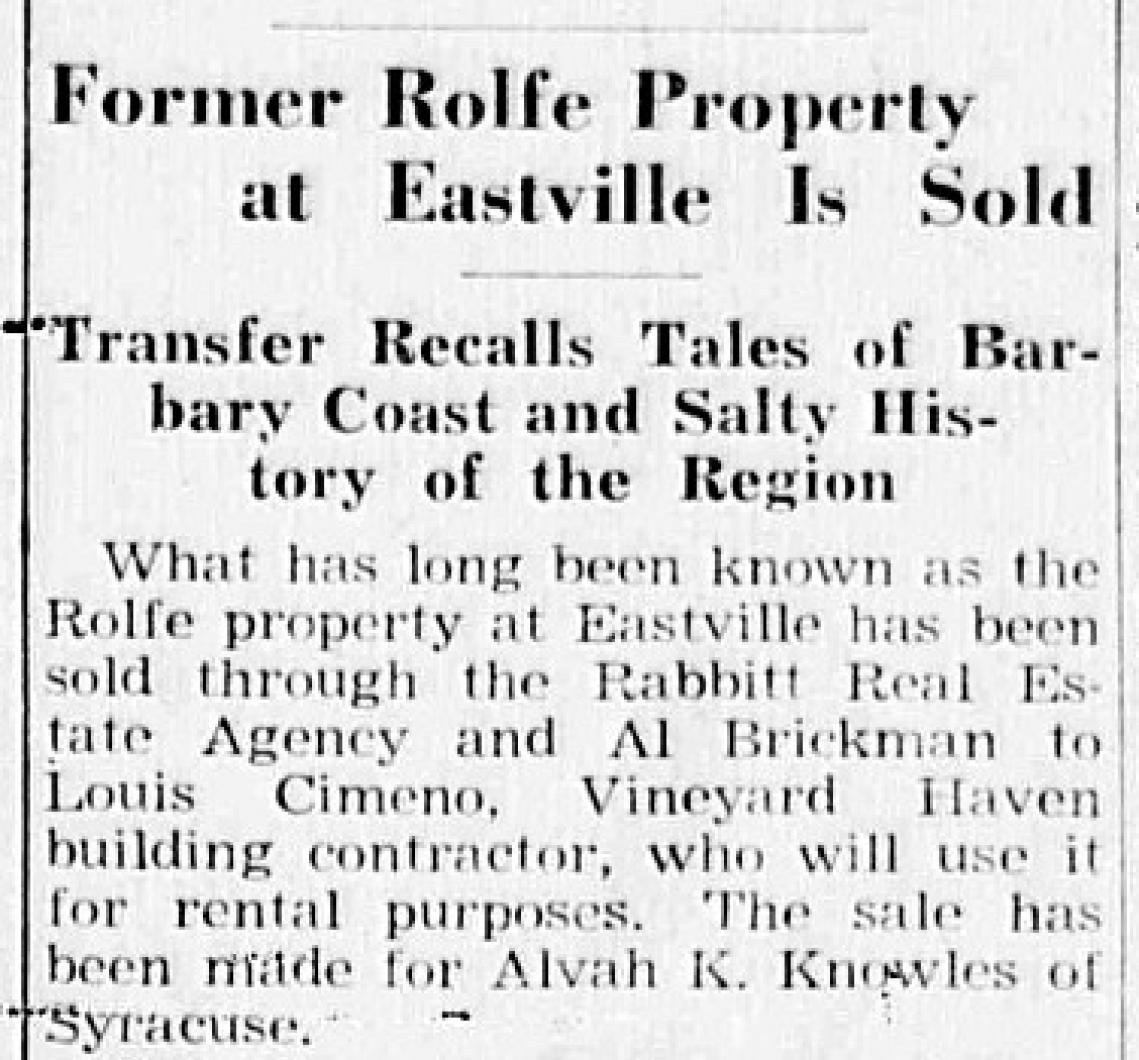
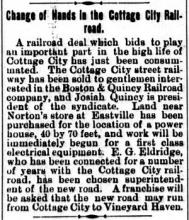
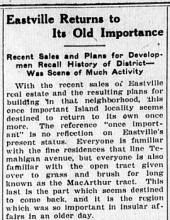
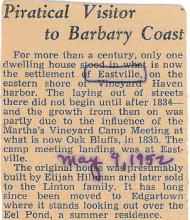
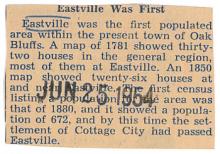

Comments